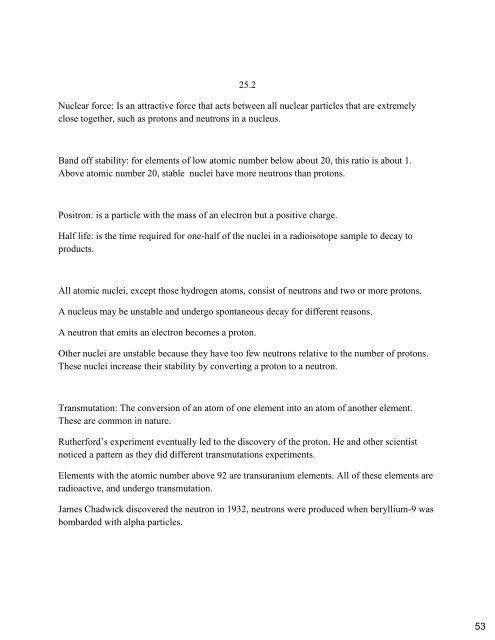Create successful ePaper yourself
Turn your PDF publications into a flip-book with our unique Google optimized e-Paper software.
25.2<br />
Nuclear force: Is an attractive force that acts between all nuclear particles that are extremely<br />
close together, such as protons and neutrons in a nucleus.<br />
Band off stability: for elements of low atomic number below about 20, this ratio is about 1.<br />
Above atomic number 20, stable nuclei have more neutrons than protons.<br />
Positron: is a particle with the mass of an electron but a positive charge.<br />
Half life: is the time required for one-half of the nuclei in a radioisotope sample to decay to<br />
products.<br />
All atomic nuclei, except those hydrogen atoms, consist of neutrons and two or more protons.<br />
A nucleus may be unstable and undergo spontaneous decay for different reasons.<br />
A neutron that emits an electron becomes a proton.<br />
Other nuclei are unstable because they have too few neutrons relative to the number of protons.<br />
These nuclei increase their stability by converting a proton to a neutron.<br />
Transmutation: The conversion of an atom of one element into an atom of another element.<br />
These are common in nature.<br />
Rutherford’s experiment eventually led to the discovery of the proton. He and other scientist<br />
noticed a pattern as they did different transmutations experiments.<br />
Elements with the atomic number above 92 are transuranium elements. All of these elements are<br />
radioactive, and undergo transmutation.<br />
James Chadwick discovered the neutron in 1932, neutrons were produced when beryllium-9 was<br />
bombarded with alpha particles.




